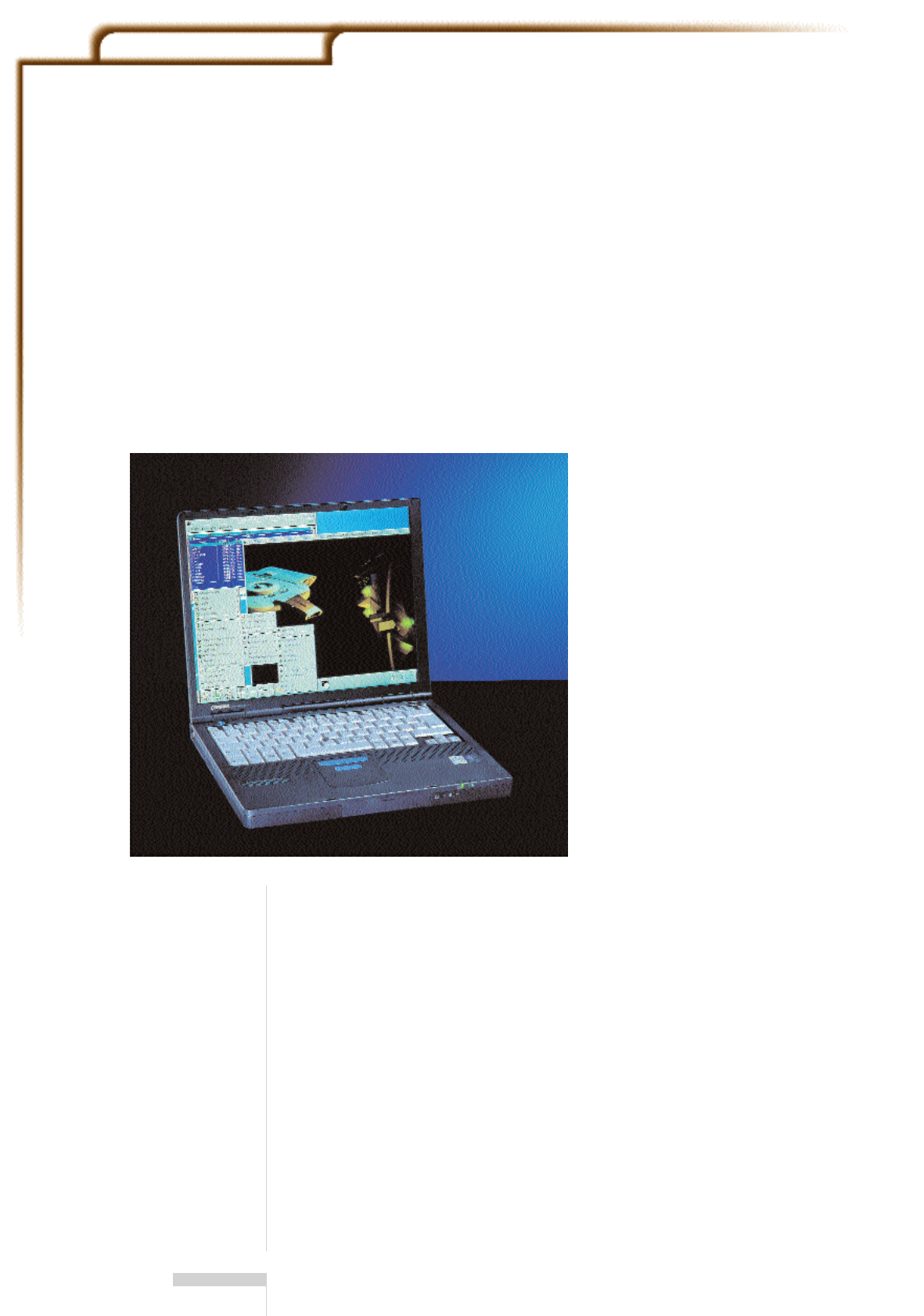
The Compaq Armada M700/7700 belongs to the
category of ultraportable notebooks. At first glance
the M700 is worth the asking price for its
robustness alone since aside from a few bits and
pieces here and there its housing is made
completely of magnesium alloy. The design also
stands out from the rest because of the generously-
curved edge at the left front sinde which is an eye-
catcher in itself. When closed, the Armada looks
very much like a book, which is due to the straight
right-angled sides and the Compaq logo which is
turned to look like the title of a book. Overall the
device is very handy and its simple elegance is
inspired.
The keyboard is, like the case, fairly non-
standard. The trackpoint, a sort of mouse-cum-
joystick, sits as usual between the keys [G], [H] and
[B]. When using most trackpoints it’s not hard to
slightly touch the [B] key with the index finger and
this may be bad depending on the program being
used. For this reason, Compaq has tilted the [B]
away from the trackpoint so there is more room for
the index finger, something which doesn’t
noticeably affect the typing feel or ability. Under the
space bar are three mouse keys which can be
operated with no problem using the PS/2 protocol.
Due to the compact dimensions – the lid is only
a few millimeters larger than the 14.1-inch TFT
display – the centre of the image is slightly offset to
the left with respect to the keyboard. The result of
this is that you have to look at the display a bit
askew. This is not really a big problem but takes
some getting used to – you tend to sit centred to
the display but then type one row of keys to the left
and keep producing gibberish.
First Start
The notebook was supplied pre-installed with
Windows 98 although you don’t get the CDs. A
standalone disk drive is supplied together with a set
of cables consisting of a parallel port adapter,
modem and Ethernet attachments. The power pack
has the new triangular power socket which is
incompatible with common power leads. If at all
possible, you should try not to lose this because
replacements could be costly. But Compaq is not
alone when it comes to this new standard – Acer
and IBM made the same choice.
Before you delete Windows when installing
Linux, you should change the TV output of the ATI
Rage Mobility graphics chipset from NTSC to PAL as
there is no option for this to be found in BIOS. This
changeover under Windows is necessary only once
and remains permanently active.
While we’re talking about TV, it’s worth
nothing that the Compaq Armada is the only
device here to simultaneously output to display
and TV over the entire range of resolutions –
there is no need to set lower resolutions for
COVER FEATURE NOTEBOOK GROUP TEST
38 LINUX MAGAZINE 5 · 2001
COMPAQ
ARMADA
M700/7700




